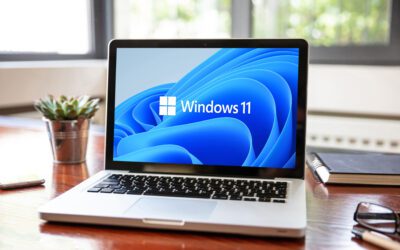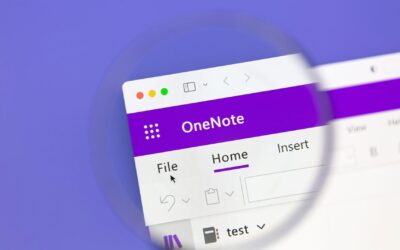How to Use the Email Archive Function in Microsoft and Build More Productivity into Your Day
Your email inbox is a necessary part of your work day. So why does it feel like you’re swimming in a sea of read and unread emails? For most people, it’s because they don’t have a good strategy for archiving emails. In the daily rush, it can seem like a hassle. But we promise the benefits of archiving email can be huge for you and your productivity. So, what does it mean to archive your emails? Let’s break it down.
What is Email Archiving?
Everyone is familiar with their email inbox. But not everyone knows that your email program can save and store your essential emails in customized folders. Look to the left-hand column on nearly any email Program, and you will see specific folders. Your email provider has standard folders that it uses for sorting your mail. Most of the time,e those standard folders are “inbox,” “drafts,” and “sent. “
Keep looking, and you’ll see a folder marked “archive.” Pay close attention to this folder because this is where you can create customized subfolders. It’s the perfect place to place subfolders around your hot-button projects, communications from key clients or bosses, vendor communications, or interesting emails you’d like to read in more detail later. The good news i you can create as many subfolders as you want
It takes a bit of work at first, but if you learn to move your emails to the correct folders as they come in, you keep your incoming inbox clean and easy to manage. With a little effort, you’ll soon be singing the benefits of email archiving.
How to Archive Emails
Capture the benefit of archiving email in just a few clicks. Creating an email archive takes surprisingly few steps. Here’s how it breaks down. ‘
Archiving Email in Gmail:
While some email programs use more traditional folders, Gmail uses a labeling system for archiving. This has several benefits because you can assign more than one label to a single email to save them in more than one location under more than one label.

Once you’re in Gmail, you can:
- Scroll down to “More” in the left-hand column
- SelectCreatee new label
- Type in a name for your new label
- ClickCreatee

- Checkmark the email or emails you’d like to label using the box to the left of the unopened email.
- Select the label icon at the top of the screen
- Select one of the labels you’ve already created, or create a new one
- Your messages will be saved in the column to the left
Archiving Emails in Microsoft Outlook:
There are two ways to save an email in Microsoft Outlook: the archive folder or a custom folder.
In the left-hand column, there is an archive folder icon. When you archive an email, this is where it is stored. This is pretty convenient. You must drag and drop your email into this folder icon, which will be held. Alternatively, you can get the same effect by clicking the archive button on your top menu bar while you have an email open.

The benefit of archiving email in the archive folder is obvious. It’s quick and easy. However, it’s not very good for grouping email threads together in their folders. For that, you’ll have to create a new folder which would go in that left-hand folder menu. Here’s how you do that:

Right-click on your inbox icon and select create a new folder from the pull-down icon. From here, you can name your folder anything you like. When you have an email that you would like to save him this folder simply drag and dro itp. It’s that easy.
Benefits of Archiving Emails
Email archiving can be a real lifesaver, saving you from that rush of panic when you can’t find the evidence of a vital email exchange. With your essentials emails only a click away, the answers you need will always be at your fingertips. But the benefits of archiving emails go far beyond that. Use archive folders regularly, and you’ll soon see a whole host of help,s including:
A Clean Email Inbox—
Many organizations, integris included, include a clean email inbox as part of their new employee training. Why? Because incoming messages and a clean inbox are easier to see and prioritize. You’ll notice those critical emails quicker when you eliminate the noise of your already-read emails in the stream. It’s hard to beat the satisfaction of leaving the office each day, knowing your email inbox is empty.
Preserving your email storage capacity—
Gmail and Outlook have tremendous cloud storage capabilities, but they’re not infinite. If you don’t clean out your mailbox regularly,y you will eventually get a notification saying your email box is full. Then you’ll have to stop and tend to the soul-crushing task of looking through potentially thousands of emails and figuring out where the important ones are buried.
Trust me; I’ve been there. Sorting emails takes hours, and you always end up missing something important. Archive emails as they come in, and you’ll probably never receive that dreaded message.
Email Archiving for Client Relations—
Do you have a client you interact with often? Keeping their emails in a separate folder means you’ll always be able to track what they’ve decided on. You can check it to ensure you haven’t missed anything and use those conversations for reference whenever you like. The benefit of archiving email from your client really can’t be overstated.
Keeping up with Important Projects—
Are you working on projects dealing with numerous vendors or employees? When your conversations are inside and outside the company, it can be challenging to remember who said what and when. Here’s an example where your email archive can save your sanity and keep your project on track.
Storing Emailed Invoices and Documentation—
Most corporate vendors send invoices by email these days. Even if you’re working through a portal, you will likely receive receipts through email. Don’t let these crucial documents fall through the cracks. Store these mission-sensitive emails in their own folder so you always know where the original conversation is stored. To be safe, it’s also intelligent to download those documents and save them in a shared folder for your accounting department as well. Your emails play an essential role in establishing the communication chain.
Archiving Emails for Research
We all get them— those business-oriented enewsletters we signed up for to stay on top of our industry. It doesn’t take long before all those helpful hints and breaking news messages pile up in your inbox. Before long, your email box may start to forward these newsletters into spam.
If you don’t want this to happen, we recommend marking the emails as necessary, so they’ll be guaranteed to come to your primary email inbox. Delete what you don’t need. Then, take those reference emails you want to keep and drag them into their folder. You’ll always have access to your backgrounders whenever you need them.
Improving Your Responsiveness
When you have control over your email, you control the conversation and how people perceive you in it. You’ll be able to reply quickly and work faster when you’re not digging through a mountain of emails competing for your attention. And who doesn’t want to be known as the employee that’s really “on it?
Put the benefit of email archiving to work for you
Want to know more about the ends and outs of archiving emails? Tutorials abound on the support pages for Microsoft and Gmail. If you’re a business that would like a managed service IT partner to help install and manage cloud-based productivity software, we can help. Contact us for a free consultation. We’d love to talk to you



